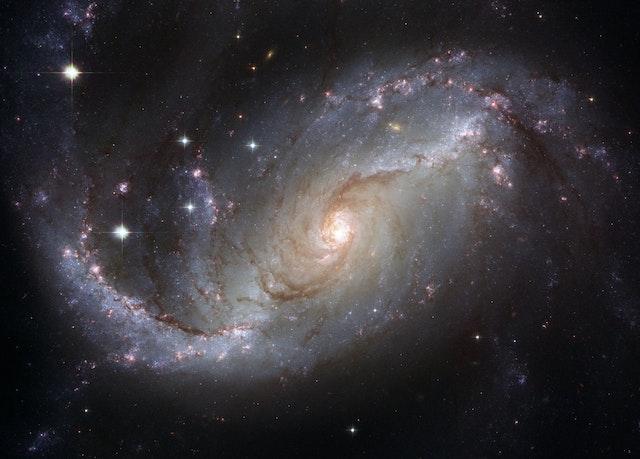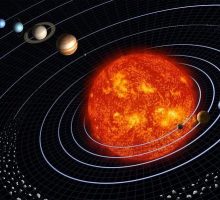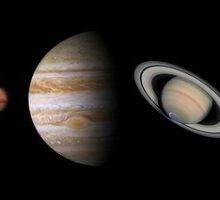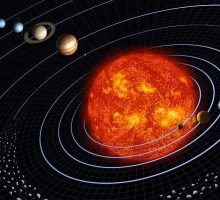- “Exploring the Milky Way: A Guide to Our Home Galaxy”
- “The Formation and Evolution of the Milky Way Galaxy”
- “The Milky Way’s Supermassive Black Hole: Understanding Sagittarius A*”
- “Our Place in the Milky Way: The Solar System and its Orbit”
- “The Milky Way’s Stellar Population: Types, Characteristics, and Distribution”
- “The Dark Side of the Milky Way: Examining Dark Matter and its Implications”
- “Milky Way Mysteries: Unanswered Questions about Our Galaxy”
- “The Milky Way’s Halo: Discovering the Outer Regions of Our Galaxy”
- “The Milky Way’s Spiral Arms: Understanding Their Formation and Significance”
- “The Milky Way’s Galactic Center: Investigating its History and Future”
- “The Milky Way’s Magnetic Field: How it Affects our Galaxy and Beyond”
- “The Chemical Composition of the Milky Way: Understanding the Elements that Make up our Galaxy”
- “Exploring the Milky Way’s Globular Clusters: Studying Some of the Oldest Objects in the Galaxy”
- “The Milky Way’s Spiral Arms: Their Dynamics, Formation, and Importance”
- “The Milky Way’s Planetary Systems: Discovering Exoplanets within our Galaxy”
- “The Future of the Milky Way: Predicting the Destiny of our Galaxy.”
Exploring the Milky Way: A Guide to Our Home Galaxy
Welcome to the ultimate guide to exploring the Milky Way – our home galaxy! As we gaze up at the night sky, we see a band of light arching across the darkness – this is the Milky Way. But what exactly is it, and how can we explore it?
Firstly, let’s start with some basics. The Milky Way is a barred spiral galaxy, approximately 100,000 light-years in diameter, containing hundreds of billions of stars. Our Solar System is located on one of the spiral arms, about 27,000 light-years away from the center.
Exploring the Milky Way can take many forms. One way is through observing and studying its stars. Astronomers use telescopes to analyze the light emitted by stars, which can tell us about their temperature, chemical composition, and age. By studying the distribution of stars across the Milky Way, we can learn about its structure and evolution.
Another way to explore the Milky Way is through its gas and dust. These materials are crucial for the formation of new stars and planetary systems. Observing the distribution and properties of gas and dust clouds can provide insights into the Milky Way’s history and current state.
There are also many exciting projects underway that are helping us to explore the Milky Way in even greater detail. For example, the European Space Agency’s Gaia mission is mapping the positions and motions of over a billion stars in the Milky Way, providing an unprecedented view of our galaxy’s structure and evolution.
But exploring the Milky Way is not just about scientific research – it’s also about appreciating its beauty and wonder. Stargazing is a great way to experience the Milky Way firsthand, whether it’s through binoculars or a telescope, or just with the naked eye on a clear night.
The Formation and Evolution of the Milky Way Galaxy
The Milky Way Galaxy is a marvel of cosmic evolution. It is a complex system that has taken billions of years to form and evolve into the galaxy we see today. Understanding its formation and evolution is crucial for astronomers to comprehend how galaxies form and change over time.
The Milky Way’s origins can be traced back to the early universe, shortly after the Big Bang. It is believed that the Milky Way’s initial structure was set in motion by the gravitational force of dark matter, a mysterious substance that makes up most of the mass in the universe. Over time, this matter began to clump together, forming dense regions that eventually collapsed under their own gravity to form the first stars and galaxies.
The Milky Way’s formation continued through a process known as hierarchical merging, where smaller galaxies merged together to form larger ones. These mergers can be seen in the Milky Way’s halo, a spherical region surrounding the galaxy that contains the remnants of past mergers.
As the Milky Way evolved, its structure began to take shape. The galaxy’s central bulge and spiral arms were formed by a combination of gravitational forces and the rotation of its disk. Gas and dust from the interstellar medium were pulled into the center of the galaxy, where they formed new stars and fueled the growth of its central supermassive black hole.
Throughout its history, the Milky Way has undergone periods of intense star formation, as well as periods of relative quiescence. These fluctuations have been driven by a variety of factors, including the availability of gas and the interactions between stars and other galactic structures.
Today, the Milky Way continues to evolve, as new stars are born and old stars die. Understanding the formation and evolution of our galaxy is not only important for astronomical research but also provides us with a glimpse into the larger processes that have shaped the universe as we know it.
The Milky Way’s Supermassive Black Hole: Understanding Sagittarius A
At the heart of the Milky Way lies a massive mystery: Sagittarius A*, a supermassive black hole with a mass of approximately four million times that of the Sun. Understanding Sagittarius A* is crucial for astronomers to comprehend the formation and evolution of galaxies, and it remains one of the most fascinating objects in the cosmos.
Sagittarius A* is located at the center of the Milky Way, about 26,000 light-years from Earth. Despite its massive size, Sagittarius A* is difficult to study directly, as it does not emit any light. Instead, astronomers must observe the effects of its gravitational pull on nearby stars and gas.
One of the key discoveries about Sagittarius A* is that it is surrounded by a dense cluster of stars, which orbit around it in a region known as the Galactic Center. These stars provide a valuable opportunity for astronomers to study the effects of the black hole’s gravity on its surroundings.
Observations of the Galactic Center have revealed that Sagittarius A* is actively accreting matter from its surroundings, which heats up and emits radiation as it falls into the black hole. These observations have also allowed astronomers to estimate the mass and spin of the black hole, as well as its distance from Earth.
Studying Sagittarius A* is not just important for understanding black holes, but also for understanding the evolution of galaxies as a whole. Supermassive black holes like Sagittarius A* are thought to play a crucial role in regulating the growth of galaxies, by influencing the distribution of gas and stars within them.
The study of Sagittarius A* is an ongoing endeavor, with new observations and discoveries being made all the time. For example, in recent years, astronomers have detected flares of radiation coming from the black hole, which may be caused by the disruption of nearby stars.
Our Place in the Milky Way: The Solar System and its Orbit
The Milky Way is not only a fascinating subject for astronomers but also provides us with a sense of our place in the universe. Our solar system, which includes the Earth and the other planets, orbits within the Milky Way’s spiral arms, about 25,000 light-years from the galaxy’s center.
The Milky Way’s spiral arms are regions of higher density, where gas and dust are compressed and new stars are formed. Our solar system is located in one of these arms, known as the Orion Arm, which is situated between the galaxy’s central bulge and its outer disk.
As our solar system orbits around the Milky Way, it follows a circular path that takes approximately 230 million years to complete. This path is known as the galactic year, and it is marked by our passage through various regions of the galaxy, including the spiral arms and the less dense regions between them.
One of the challenges of studying our place in the Milky Way is that our view of the galaxy is obstructed by dust and gas. However, by observing the motions of nearby stars and mapping the distribution of gas and dust, astronomers have been able to construct a detailed picture of the galaxy’s structure and our place within it.
Understanding our place in the Milky Way is not just important for astronomy but also for understanding the larger context of our existence. The Milky Way is one of billions of galaxies in the universe, and by studying it, we can gain insight into the processes that have shaped the cosmos as a whole.
The Milky Way’s Stellar Population: Types, Characteristics, and Distribution
The Milky Way is home to a wide variety of stars, ranging from small, cool, and dim red dwarfs to massive, hot, and bright blue giants. The study of the Milky Way’s stellar population is a crucial aspect of understanding the galaxy’s structure and evolution.
The different types of stars in the Milky Way can be classified based on their spectral characteristics, which reveal information about their temperature, composition, and luminosity. The most common types of stars in the Milky Way are main-sequence stars, which are in a stable state of hydrogen fusion and represent the majority of the galaxy’s stellar population.
Other types of stars in the Milky Way include red giants, which have expanded and cooled after exhausting their core hydrogen; white dwarfs, which are the remnants of low-mass stars that have exhausted their nuclear fuel; and supergiants, which are massive and luminous stars that are nearing the end of their lives.
The distribution of stars in the Milky Way is not uniform but instead follows a pattern that reflects the galaxy’s structure. Most stars are concentrated in the galactic disk, which is a flattened region that contains the spiral arms and is home to most of the galaxy’s star formation. The galactic bulge, which is a spherical region at the center of the galaxy, contains older stars and is thought to have formed early in the galaxy’s history.
The Milky Way’s stellar population is not only important for understanding the galaxy’s structure but also for studying the processes that govern star formation and evolution. By observing the characteristics and distribution of stars in the Milky Way, astronomers can gain insight into the physical processes that drive the formation of stars, as well as the factors that determine their ultimate fate.
The Dark Side of the Milky Way: Examining Dark Matter and its Implications
The existence of dark matter is one of the biggest mysteries in modern astrophysics, and its study is crucial for understanding the structure and evolution of the Milky Way. Dark matter is a type of matter that does not emit or absorb light, making it invisible to traditional methods of observation.
Despite its invisibility, astronomers have been able to detect dark matter indirectly through its gravitational effects on visible matter, such as stars and gas. Observations of the motion of stars within the Milky Way have revealed that there is more mass in the galaxy than can be accounted for by visible matter alone. This discrepancy is thought to be due to the presence of dark matter.
The distribution of dark matter in the Milky Way is not well understood, but it is thought to be concentrated in a halo surrounding the galactic disk. This halo is thought to extend far beyond the visible extent of the galaxy and may contain several times more mass than the visible matter in the galaxy.
The presence of dark matter has important implications for the evolution of the Milky Way and the universe as a whole. The additional mass provided by dark matter helps to explain the formation and stability of galactic structures, such as spiral arms and galactic clusters. The study of dark matter also has important implications for our understanding of the universe’s evolution, as it is thought to be a key component in the process of cosmic structure formation.
Despite decades of study, the nature of dark matter remains a mystery, and its detection and study continue to be one of the most active areas of research in astrophysics. The search for dark matter detection is ongoing through a variety of methods, including direct detection experiments and observations of gravitational lensing.
Milky Way Mysteries: Unanswered Questions about Our Galaxy
Despite decades of research, there are still many unanswered questions about the Milky Way, one of the most mysterious objects in the universe. While we have made significant progress in understanding the galaxy’s structure, evolution, and the role it plays in the larger universe, there are still many aspects that remain a mystery.
One of the biggest mysteries is the origin of the Milky Way’s spiral structure. It is believed that the galaxy’s spiral arms are formed by the interaction between stars and gas within the galaxy, but the exact mechanisms that create and maintain these structures are still not well understood.
Another mystery is the source of the Milky Way’s high-energy particles, such as cosmic rays. While we know that cosmic rays are produced by violent events such as supernovae and black holes, we still don’t know exactly how they are accelerated to such high energies within the galaxy.
The origin and evolution of the Milky Way’s supermassive black hole, Sagittarius A*, is also a mystery. While we know that it exists and has a mass of around four million times that of the Sun, we still don’t know how it formed, or why it is located at the center of the galaxy.
The nature of the Milky Way’s dark matter is another unsolved mystery. Despite its importance in shaping the structure and evolution of the galaxy, we still don’t know what dark matter is made of, how it interacts with visible matter, or how it was formed.
Finally, the ultimate fate of the Milky Way itself is still a matter of debate. While we know that the galaxy is currently undergoing a slow process of merging with its neighboring galaxy, Andromeda, it is unclear what will happen when the two galaxies finally collide. Will they merge to form a single, larger galaxy, or will they be torn apart by their mutual gravity?
The Milky Way’s Halo: Discovering the Outer Regions of Our Galaxy
The Milky Way’s halo is the outermost region of the galaxy, extending well beyond the disk of the galaxy itself. It is a diffuse and relatively low-density region that contains a variety of objects, including globular clusters, dwarf galaxies, and dark matter.
The halo was first discovered in the early 20th century, and its study has been a crucial area of research in astrophysics. One of the main ways that astronomers study the halo is through observations of globular clusters, which are tightly bound groups of stars that orbit the galaxy in the halo region.
Another important object in the halo is the Magellanic Clouds, two small dwarf galaxies that orbit the Milky Way. The Magellanic Clouds are thought to have been pulled into the galaxy’s gravitational field billions of years ago and are currently being disrupted by their interaction with the Milky Way’s halo.
Observations of the halo have also provided important insights into the nature of dark matter, which is thought to be a major component of the halo’s mass. By studying the motion of stars and gas within the halo, astronomers can infer the distribution and properties of dark matter within the galaxy.
Despite its importance, the Milky Way’s halo remains a relatively unexplored region of the galaxy. Its low density and diffuse nature make it difficult to observe, and much of its structure and properties are still unknown. However, ongoing and future missions such as the James Webb Space Telescope and the European Space Agency’s Gaia mission are expected to provide new insights into the nature and evolution of the Milky Way’s halo.
The Milky Way’s Spiral Arms: Understanding Their Formation and Significance
The Milky Way’s spiral arms are one of its most distinctive features. They are regions of the galaxy where stars and gas are tightly packed together, creating a distinctive pattern of bright and dark regions. The spiral arms are also believed to play an important role in the evolution and structure of the galaxy.
Despite their importance, the origin and nature of the Milky Way’s spiral arms are still not well understood. One theory suggests that they are created by the gravitational interaction between stars and gas in the galaxy, while another suggests that they are formed by the collision of smaller galaxies with the Milky Way.
Observations of the Milky Way’s spiral arms have revealed a complex structure with multiple arms and branches, which has led some astronomers to suggest that they are not permanent structures, but rather transient features that come and go over time.
Despite the uncertainty surrounding their origin, the spiral arms are believed to play an important role in the evolution of the galaxy. They are thought to be regions of enhanced star formation, where the high density of gas and dust allows stars to form more efficiently. The spiral arms are also believed to help redistribute gas and dust throughout the galaxy, helping to maintain the balance between the disk and halo regions.
The spiral arms may also play a role in the development of life in the Milky Way. It is believed that the high concentration of stars and planets in the spiral arms could provide ideal conditions for the development of complex life forms.
The Milky Way’s Galactic Center: Investigating its History and Future.
The Milky Way’s galactic center is located in the constellation Sagittarius and is home to a supermassive black hole known as Sagittarius A*. The region is also characterized by intense radiation and high-energy particle emission, making it a fascinating and challenging area of study for astronomers.
One of the main ways that astronomers study the galactic center is through observations of stars in the region. These stars have been found to orbit around a central point, which is believed to be the location of the supermassive black hole. By studying the motion of these stars, astronomers can infer the mass and properties of the black hole.
Observations of the galactic center have also provided important insights into the history and future of the Milky Way. By studying the distribution and motion of stars in the region, astronomers have been able to reconstruct the evolution of the galaxy over billions of years.
One of the most exciting recent discoveries in the galactic center is the existence of a cluster of stars known as the “S-star cluster”. This group of stars orbits very close to the supermassive black hole and has been found to follow the predictions of Einstein’s theory of general relativity.
The galactic center is also believed to play an important role in the future of the Milky Way. The supermassive black hole at the center of the galaxy is believed to be growing as it consumes stars and gas, and may eventually merge with other black holes in the region. This process could have significant implications for the structure and evolution of the galaxy over the long term.
The Milky Way’s Magnetic Field: How it Affects our Galaxy and Beyond
The Milky Way’s magnetic field is a complex and fascinating topic that has captured the interest of astronomers for many years. While invisible to the naked eye, magnetic fields play an important role in shaping the structure and evolution of our galaxy, as well as influencing the behavior of other celestial objects in the universe.
At its core, the Milky Way’s magnetic field is generated by the motion of charged particles, such as electrons and protons, throughout the galaxy. These particles interact with the magnetic fields of other objects in the galaxy, such as stars and gas clouds, to create a network of interconnected magnetic fields that span the entire galaxy.
One of the key effects of the Milky Way’s magnetic field is that it helps to shape the structure of the galaxy’s interstellar medium. By interacting with gas clouds and other objects, the magnetic field can create filaments and bubbles of ionized gas that can influence the formation of stars and other celestial objects.
The magnetic field also plays a role in the behavior of cosmic rays, which are high-energy particles that originate from outside the solar system. As these particles travel through the galaxy, they interact with the magnetic field, which can deflect their paths and influence their distribution throughout the galaxy.
The Milky Way’s magnetic field also has implications for our understanding of the universe beyond our galaxy. As magnetic fields are believed to be present throughout the universe, studying the Milky Way’s magnetic field can provide valuable insights into the behavior of other celestial objects and the evolution of the universe as a whole.
In recent years, new observations and modeling techniques have allowed astronomers to gain a better understanding of the Milky Way’s magnetic field and its effects on the galaxy and beyond. Ongoing research in this area promises to provide valuable insights into the workings of our universe and our place within it.
The Chemical Composition of the Milky Way: Understanding the Elements that Make up our Galaxy
The Milky Way is a vast and complex system, composed of countless stars, planets, and other celestial objects. One of the key factors that determine the characteristics of these objects is their chemical composition, or the elements that make up their structure. Understanding the chemical composition of the Milky Way is therefore essential for understanding its evolution, as well as our place within it.
The Milky Way is composed of a wide range of elements, ranging from the lightest, such as hydrogen and helium, to the heaviest, such as uranium and plutonium. These elements are created through a process known as nucleosynthesis, which occurs during the formation and evolution of stars.
The chemical composition of the Milky Way can be studied through the analysis of the spectra of stars and other celestial objects. By examining the light emitted by these objects, astronomers can determine the elements that make up their composition, as well as their abundance.
One of the key findings of chemical analysis of the Milky Way is that the relative abundance of elements varies depending on their atomic number. Elements with lower atomic numbers, such as hydrogen and helium, are much more abundant than those with higher atomic numbers, such as gold and platinum.
Another important aspect of the Milky Way’s chemical composition is the presence of heavy elements, which are produced through processes such as supernova explosions and neutron star mergers. These elements play a crucial role in the formation of rocky planets and other solid objects, as well as the evolution of life.
Studying the chemical composition of the Milky Way is also important for understanding the formation and evolution of galaxies in general. By comparing the composition of the Milky Way to other galaxies in the universe, astronomers can gain insights into the physical processes that drive the evolution of galaxies, such as star formation and supernova explosions.
In recent years, new observational techniques and models have allowed astronomers to gain a more detailed understanding of the chemical composition of the Milky Way. Ongoing research in this area promises to provide valuable insights into the origins of our universe, as well as the formation and evolution of the countless celestial objects that make up the Milky Way.
Exploring the Milky Way’s Globular Clusters: Studying Some of the Oldest Objects in the Galaxy
The Milky Way is home to a vast array of celestial objects, ranging from planets and stars to nebulae and black holes. One particularly fascinating type of object found in the Milky Way’s halo are globular clusters, which are some of the oldest and most densely packed objects in our galaxy.
Globular clusters are spherical groups of stars that contain anywhere from a few thousand to a few million stars. They are typically found in the outer regions of the Milky Way’s halo, and are thought to have formed early in the galaxy’s history.
Studying globular clusters can provide valuable insights into the early evolution of the Milky Way, as well as the nature of stars and their formation. Because they contain some of the oldest stars in the galaxy, globular clusters can provide clues about the conditions that existed during the galaxy’s formation, as well as the physical processes that drive star formation.
Globular clusters are also important in the study of stellar populations and galactic dynamics. By examining the distribution and properties of globular clusters, astronomers can gain insights into the structure and dynamics of the Milky Way, as well as the role of dark matter in shaping its structure.
One particularly intriguing aspect of globular clusters is their internal dynamics. Because they are so densely packed, globular clusters can be thought of as miniature galaxies in their own right, with stars interacting and colliding with each other in complex ways. These interactions can lead to the formation of exotic objects such as blue stragglers and millisecond pulsars, which are not commonly found outside of globular clusters.
In recent years, new observational techniques and technologies have allowed astronomers to gain a more detailed understanding of globular clusters and their properties. These include studies of their chemical composition, internal dynamics, and stellar populations, as well as the use of gravitational lensing to probe their distribution and structure.
Ongoing research in this area promises to provide valuable insights into the early evolution of the Milky Way, as well as the nature of stars and their formation. By studying globular clusters, astronomers can gain a deeper understanding of the physical processes that drive the formation and evolution of galaxies, as well as the origins of life and the universe itself.
The Milky Way’s Spiral Arms: Their Dynamics, Formation, and Importance
The Milky Way is a spiral galaxy, which means it has a distinctive structure made up of spiral arms that radiate outwards from the center. These spiral arms are some of the most striking features of the galaxy, and play a crucial role in its dynamics, formation, and evolution.
The Milky Way’s spiral arms are regions of enhanced density and star formation, where new stars are born from the collapse of gas and dust clouds. These clouds are concentrated in the spiral arms due to gravitational instabilities, which cause the gas and dust to clump together and form stars.
The spiral arms themselves are not static structures, but instead are constantly changing and evolving over time. They are thought to be caused by a combination of factors, including gravitational interactions between stars, gas, and dust, as well as the influence of the galaxy’s bar-shaped central structure.
One of the key dynamics of the Milky Way’s spiral arms is their differential rotation. Because the galaxy is rotating, stars and gas in the inner regions of the galaxy orbit the center more quickly than those in the outer regions. This differential rotation causes the spiral arms to wind up over time, like a coiled spring.
The formation and evolution of the Milky Way’s spiral arms is an area of active research in astronomy. One theory is that the spiral arms are formed through the process of density waves, which propagate through the galaxy and cause regions of enhanced density to form. Other theories suggest that the arms are the result of the interactions between the galaxy’s bar structure and its surrounding environment.
Understanding the dynamics and formation of the Milky Way’s spiral arms is important for a number of reasons. For one, it can provide insights into the formation and evolution of other spiral galaxies in the universe. Additionally, the spiral arms are regions of intense star formation, and are thought to be the birthplace of many of the galaxy’s most massive and luminous stars.
The spiral arms also play an important role in the overall structure and dynamics of the Milky Way. They are believed to be a major driver of the galaxy’s density wave, which helps to regulate the flow of gas and stars through the galaxy. In addition, they can act as a reservoir of gas and dust that can fuel future generations of star formation.
Overall, the Milky Way’s spiral arms are a fascinating and important feature of our galaxy. Their dynamics and formation provide insights into the complex processes that drive the formation and evolution of galaxies, while their importance for star formation and galactic dynamics make them an essential component of the Milky Way’s structure and history.
The Milky Way’s Planetary Systems: Discovering Exoplanets within our Galaxy
The Milky Way is home to billions of stars, and with each passing year, we are discovering more and more exoplanets orbiting these stars. These planetary systems offer a unique glimpse into the diversity of worlds that exist within our galaxy, and provide insights into the processes that drive planetary formation and evolution.
Planetary systems are typically discovered through a variety of observational techniques, including the transit method, radial velocity method, and direct imaging. These methods allow astronomers to detect the presence of exoplanets by observing the subtle changes in a star’s brightness or motion caused by the planet’s presence.
One of the most exciting recent discoveries in the study of planetary systems is the detection of potentially habitable exoplanets. These planets are located in the so-called “habitable zone” around their host stars, where the temperature is just right for liquid water to exist on the planet’s surface. The discovery of these planets has sparked a renewed interest in the search for extraterrestrial life within our galaxy.
The study of planetary systems within the Milky Way also offers insights into the processes that drive planet formation and evolution. Planetary systems are thought to form from the protoplanetary disks of gas and dust that surround young stars. These disks can give rise to a wide variety of planets, from gas giants like Jupiter to rocky worlds like Earth.
Understanding the formation and evolution of planetary systems is an active area of research in astronomy. By studying the properties of exoplanets and their host stars, astronomers can learn about the conditions that are necessary for planet formation, and gain insights into the complex interactions between planets and their parent stars.
In addition to their scientific significance, planetary systems within the Milky Way are also of great interest from a philosophical and cultural perspective. The possibility of extraterrestrial life within our galaxy has captured the imagination of people for centuries, and the discovery of exoplanets has brought this dream one step closer to reality.
The Future of the Milky Way: Predicting the Destiny of our Galaxy
The Milky Way, like all galaxies, is constantly changing and evolving. Over billions of years, it has undergone countless transformations, and its future is no less uncertain. Despite this uncertainty, astronomers have developed a number of models and predictions for what the future of our galaxy might hold.
One of the key factors that will shape the future of the Milky Way is the presence of dark matter. This mysterious substance, which makes up the majority of the mass of the galaxy, exerts a powerful gravitational pull on its surroundings. Over time, this gravitational influence will cause the galaxy to continue to evolve and change.
Another important factor that will shape the future of the Milky Way is the motion of its stars. Over time, the gravitational interactions between stars will cause them to change their positions within the galaxy. This motion will drive the formation of new structures within the galaxy, such as spiral arms and stellar streams.
One of the most significant events in the future of the Milky Way will be the collision with the neighboring Andromeda galaxy. This event, which is predicted to occur in about 4 billion years, will dramatically reshape the structure of both galaxies. The collision will trigger the formation of new stars and stellar structures, and will ultimately lead to the formation of a new, larger galaxy.
Beyond the collision with Andromeda, the ultimate fate of the Milky Way is uncertain. Some models predict that the galaxy will eventually merge with other nearby galaxies, while others suggest that it will continue to evolve on its own for billions of years to come.
Regardless of its ultimate destiny, the future of the Milky Way is a subject of ongoing fascination for astronomers and laypeople alike. By studying the processes that drive galaxy evolution, we can gain a deeper understanding of the universe around us, and better appreciate our place within it.












